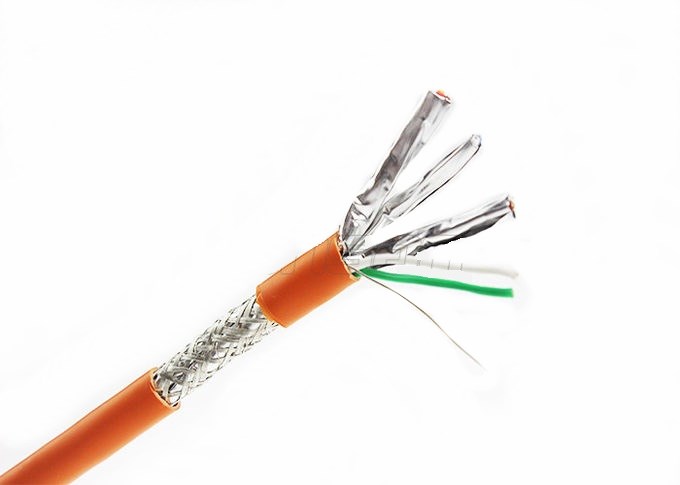COB : The Chip On Board (COB) process first covers the wafer placement point with a thermally conductive epoxy resin (usually an epoxy resin doped with silver particles) on the surface of the substrate, and then places the silicon wafer directly on the surface of the substrate. The heat treatment is performed until the silicon wafer is firmly fixed to the substrate, and then the electrical connection is directly established between the silicon wafer and the substrate by wire bonding. There are two main types of bare chip technology: one is COB technology and the other is flip chip technology (Flip Chip). Chip-on-board (COB), semiconductor chip is placed on the printed circuit board, and the electrical connection between the chip and the substrate is achieved by wire stitching. The electrical connection between the chip and the substrate is achieved by wire stitching and covered with resin to ensure reliability. . Although COB is the simplest bare chip placement technology, its packaging density is far less than that of TAB and flip chip bonding.
1, ceramic substrate
1, ceramic substrate
Representative company: Nichia, Sharp
In view of the comprehensive considerations of insulation, pressure resistance, heat dissipation and heat resistance, ceramic substrates have become one of the important materials for chip adhesion technology. The technology can be divided into a thick film process (Thick film), a low temperature co-firing process (LTCC) and a thin film process (DPC).
To this end, the high heat dissipation coefficient thin film ceramic heat sink substrate is made of sputtering, electric/chemical deposition, and yellow light lithography. It has the characteristics of precise metal lines and stable material system. It is suitable for high power, small size and high brightness LEDs. The development trend has solved the stringent requirements for the resolution and accuracy of the metal substrate of the ceramic substrate in the eutectic/over-chip packaging process. When the LED chip uses ceramic as the carrier board, the heat dissipation bottleneck of the LED module is transferred to the system circuit board, and the heat energy is transmitted from the LED chip to the heat dissipation fin and the atmosphere, and as the function of the LED chip is gradually improved, the material is also improved. Gradually changed from FR4 to metal core printed circuit board (MCPCB), but with the development of high-power LEDs, the thermal coefficient of MCPCB material (2~4W/mk) cannot be used for higher power products. For this reason, ceramic circuits The demand for ceramic circuit boards has gradually become popular. In order to ensure material stability and light decay stability of LED products under high power operation, the trend of using ceramics as heat dissipation and metal wiring substrates has become increasingly clear. Ceramic materials currently cost more than MCPCB. Therefore, how to use the high heat dissipation coefficient of ceramics to save material use area to reduce production costs has become one of the important indicators for the development of ceramic LEDs. Therefore, in recent years, the integration of polycrystalline packages and system lines with ceramic material COB design has gradually attracted the attention of various packaging and system manufacturers.
2, MCPCB (Metal Core Printed Circuit Board)
Representative company: Citizen, CREE
MCPCB refers to the metal-based printed circuit board (MCPCB), which is to attach the original printed circuit board to another metal with better heat conduction effect, which can improve the heat dissipation at the board level.
However, MCPCB also has some limitations. It should not exceed 140 °C when the circuit system is operating. This is mainly due to the characteristic limitation of the Dielectric Layer (Insulated Layer). In addition, it must not exceed 250 °C during the manufacturing process. ∼300 ° C, this must be known before the tin furnace.
Although MCPCB has better heat dissipation effect than FR4 PCB, the dielectric layer of MCPCB does not have too good thermal conductivity, and the conduction bottleneck between the heat dissipation block and the metal core plate. However, it is still better than FR4 PCB. The existing MCPCB can reach 3W/mK, while the FR4 is only 0.3W/mK.
At present, COB products are still mainly used in the production of COPCB products. However, MCPCB still has many problems of heat dissipation and excessive light source area, so the fundamental way is to update from the heat dissipation material to the most effective solution.
Lan Network Cable widely used at Voice data, Graphic image, Multi-media, Security monitoring and other data transmission. Combined with Keystone Jack Patch cords, and patch panel, it provides excellent and stable performance. All series of the Lan Network Cable products include shielded and unshielded Category 5E, Category 6, Category 6A and Category 7 and other fiber optic products.
The solution is not only for hospital, government manufacturingand other environments. For different application, you can find our product accordingly.

Lan Network Cable
Lan Network Cable, Lan Cable, UTP Lan Network Cable, FTP Lan Network Cable
NINGBO YULIANG TELECOM MUNICATIONS EQUIPMENT CO.,LTD. , https://www.yltelecom.com